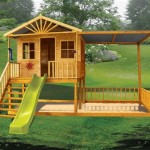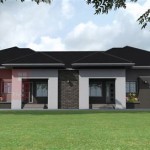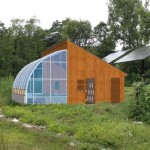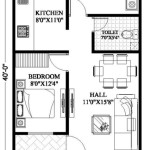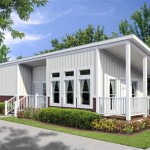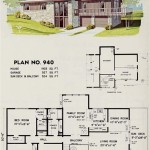Cubby House Plans Using Pallets: A Guide to Construction
Building a cubby house from pallets offers a cost-effective and environmentally friendly approach to creating a fun and engaging play space for children. Pallets, often readily available as discarded materials from businesses, provide a sturdy and adaptable framework for constructing a variety of cubby designs. This article will explore the process of planning and building a pallet cubby house.
The initial stage involves careful planning and design. Consider the desired size and shape of the cubby house, taking into account the available space and the age of the children who will be using it. Sketching a basic design on paper helps visualize the final structure and determine the required number of pallets. Factor in elements like windows, doors, and any additional features such as a small porch or a raised platform.
Sourcing pallets is the next step. Many businesses discard used pallets, making them available for free or at a low cost. However, it is essential to inspect pallets thoroughly before use. Avoid pallets that have been treated with chemicals, as these can be harmful. Look for pallets stamped with "HT" (heat treated) rather than "MB" (methyl bromide treated). Clean the pallets thoroughly using a brush, soap, and water to remove dirt and debris.
Disassembling the pallets carefully provides individual boards for construction. Use a crowbar, hammer, and reciprocating saw to carefully dismantle the pallets, minimizing damage to the wood. Remove any protruding nails or staples to prevent injuries during the building process. Sort the reclaimed wood according to size and quality, setting aside any damaged pieces for other uses or disposal.
Building a solid foundation ensures the stability and longevity of the cubby house. Level the ground where the cubby will be placed. Consider using concrete blocks or pavers to create a raised base, providing better protection against moisture and pests. Construct a frame using pressure-treated lumber for the base, ensuring it is square and level. Attach the pallet boards to the frame, creating a solid floor.
Constructing the walls involves assembling the prepared pallet boards onto the base. Use a combination of screws and nails to secure the boards, creating a sturdy structure. Leave spaces for windows and doors according to the pre-determined design. Reinforce the corners and joints for added stability. Consider adding cross bracing to strengthen the walls and prevent warping or leaning.
Creating openings for windows and doors requires accurate measurements. Cut the openings using a saw, ensuring they are the correct size and shape. Construct simple frames for the windows and doors using reclaimed pallet wood or additional lumber. Attach the frames securely to the wall openings using hinges and latches for easy operation.
Adding a roof provides shelter and completes the structure. Construct a simple pitched roof using additional pallet wood or lightweight roofing materials. Ensure the roof overhangs the walls to provide adequate protection from rain. Consider adding roofing felt or shingles for weatherproofing. Secure the roof firmly to the walls using screws and nails.
Finishing touches enhance the appearance and safety of the cubby house. Sand down any rough edges or splinters to create a smooth and safe surface. Apply a coat of paint or stain to protect the wood and enhance the aesthetics. Consider adding decorative elements such as window boxes, curtains, or a small porch to personalize the cubby house.
Safety considerations are paramount throughout the construction process. Wear appropriate safety gear, including gloves, eye protection, and a dust mask. Use power tools with caution and follow manufacturer's instructions. Ensure the structure is stable and secure, checking regularly for loose boards or nails. Supervise children at all times while they are using the cubby house.
Regular maintenance helps prolong the lifespan of the pallet cubby house. Inspect the structure periodically for signs of wear and tear. Repair any damaged boards or loose nails promptly. Reapply paint or stain as needed to protect the wood from the elements. Regular cleaning helps to keep the cubby house hygienic and free from pests.
Variations in design allow for customization and creativity. Consider adding a slide, climbing wall, or swing set to enhance the play experience. Incorporate recycled materials such as old tires, plastic bottles, or fabric scraps to create unique and imaginative features. The possibilities are limited only by imagination and available resources.
Building a pallet cubby house provides a rewarding project for families. It offers an opportunity to engage in creative construction while utilizing recycled materials. The resulting play space provides children with a stimulating environment for imaginative play and outdoor exploration.

Pallet Cubby House Recycled Creations South Aust Creati Diy Tree Houses Kids

25 Free Diy Pallet Playhouse Plans And Ideas Tree House Kids Garden Outdoor Projects

Diy Rustic Wooden Pallet Cubby Houses Pallets Designs Backyard Projects

Pallet Cubby House Playhouse Ideas Easy

Diy Pallet Playhouse How To Make A Kids Out Of Pallets

Cubby House For Under 30 Hometalk

Pallet Cubby House With Inbuilt Planter Recycled Creations South Outdoor Projects Furniture

Diy Pallet Playhouse How To Make A Kids Out Of Pallets

Building A Pallet Playhouse

How We Built Our Pallet Playhouse By Kids

